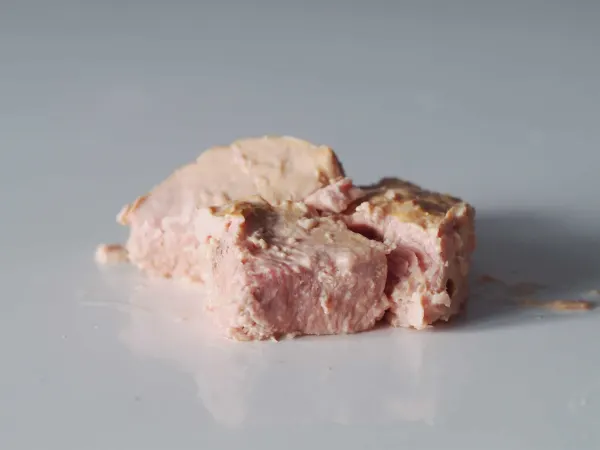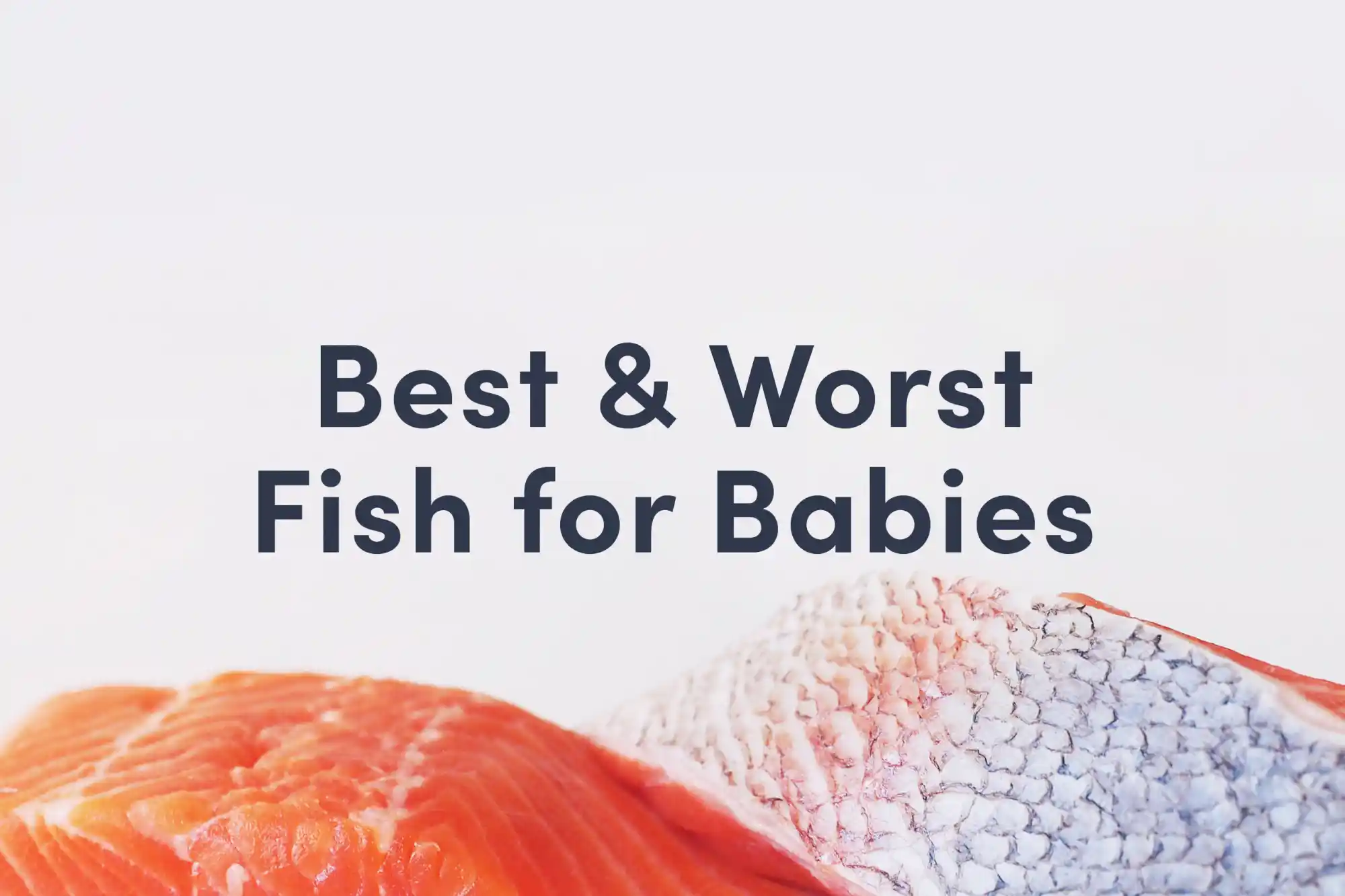Tuna
Fish (Finned)
Age Suggestion
6 months
Iron-Rich
Yes
Common Allergen
Yes

Warning
Some types of tuna (albacore, bigeye, canned white tuna, and yellowfin, for example) contain very high amounts of mercury. Mercury is a toxin to which babies are particularly susceptible. If you regularly serve tuna, skipjack tuna (sometimes called chunk light tuna) is typically the lowest in mercury.
When can babies have tuna?
Tuna, when fully cooked, may be introduced as soon as baby is ready to start solids, which is generally around 6 months of age. Wait to regularly serve most species of tuna until a child is older, as many have high mercury levels. Skipjack tuna (sometimes called chunk light tuna) is typically the lowest in mercury and may be consumed in moderation.
Tuna are a large, fast-swimming family of fish that live in ocean waters worldwide. There are a number of members of the tuna family, but albacore, bigeye, bluefin, skipjack, and yellowfin tuna are among the most widely commercially fished. Tuna’s savory, meaty taste is popular when cooked, served as sushi, canned, and much more.
Is tuna healthy for babies?
Yes, in moderation and when fully cooked. Tuna is rich in protein and omega-3 fatty acids, zinc, and B vitamins, but can also be high in mercury, a toxic metal that builds up in the body when it is repeatedly consumed. If you regularly eat tuna, one way to lower exposure to mercury is to opt for skipjack tuna (chunk light tuna) when it is available.
Is there mercury in tuna?
Yes. Tuna contains varying amounts of mercury due to pollution in our oceans. Mercury is a persistent and progressive toxin present in most seafood to which babies are particularly susceptible. Thankfully, there are many fish that are low in mercury that babies can enjoy. To minimize baby’s exposure to mercury from fish, prioritize fish that are lowest in mercury (like arctic char, salmon, sardines, or canned mackerel), limit the amount and frequency of fish that have higher amounts of mercury, and focus on variety in the diet.
Is tuna a common allergen?
Yes. Finned fish are classified as a Global Priority Allergen by the World Health Organization. Tuna is among the most common finned fish allergies, along with cod, halibut, and salmon. It’s estimated that only 0.2% of people are allergic to finned fish worldwide, and the prevalence of fish allergies in children, while variable, is even less than in adults. About 40% percent of people with finned fish allergies don’t experience their first allergic reaction until adulthood. Unfortunately, most individuals who are allergic to finned fish do not outgrow the allergy.
Some individuals with finned fish allergy may react from inhaling proteins that become aerosolized when cooking fish. If this is the case for baby, you may wish to avoid cooking fish in the household when baby is present.
Around 50% of individuals with one finned fish allergy will react to another fish as well. This is because the major allergen in finned fish, beta-parvalbumin, is present in most fish, regardless of species. Due to cross-contamination and mislabeling of fish, allergists often recommend that those who are allergic to one species of finned fish should avoid all finned fish until meeting with an allergist to determine which fish might be safely introduced into the diet. This is an individualized recommendation, so be sure to confirm with your allergist before offering other finned fish if baby is allergic to tuna.
Finned fish are a known trigger of food protein-induced enterocolitis syndrome, also known as FPIES. FPIES is a delayed allergy to food protein which causes the sudden onset of repetitive vomiting and diarrhea to begin a few hours after ingestion. Left untreated, the reaction can result in significant dehydration. Unlike other food allergens, FPIES to finned fish may not present until later in life, and tends to be life-long.
Lastly, a note on scombroid poisoning, which is sometimes mistaken for a fish allergy. Scombroid poisoning is a type of food poisoning that occurs when someone eats fish that has been improperly refrigerated. This allows a large amount of histamine to build up in the fish. When consumed, this large load of histamine can cause symptoms that mimic those of an allergic reaction, causing some people to believe that they have developed a finned fish allergy, even if they are not allergic. Ensuring that fish has been stored at adequately cool temperatures can minimize the risk of such a reaction.
If you suspect baby may be allergic to fish, consult an allergist before introducing tuna. As with all common allergens, introduce tuna in small amounts at first and watch closely as baby eats to see if any adverse reaction occurs. If all goes well, gradually increase the serving size over time. Once common food allergens are successfully introduced, it is recommended to keep them in the diet regularly (twice weekly, if possible). However, this doesn’t mean that each different fish species must be offered multiple times a week. Finned fish share the same major proteins, so it is perfectly acceptable to rotate finned fish varieties according to availability and preference.
Is tuna a choking hazard for babies?
No, tuna typically presents a low choking risk, although the bones in freshly-cooked fish are a choking hazard. To reduce the risk, prepare and serve tuna in an age-appropriate way. As always, make sure to create a safe eating environment and stay within an arm’s reach of baby at mealtime. For more information on choking, visit our sections on gagging and choking and familiarize yourself with the list of common choking hazards.
Learn the signs of choking and gagging and more about choking first aid in our free guides, Infant Rescue and Toddler Rescue.
Which tuna is best for babies and children?
If you plan on regularly serving tuna to baby, skipjack tuna (sometimes called chunk light tuna) is typically the lowest in mercury. Wait until the child is older to regularly offer other kinds of tuna (including albacore, bigeye, canned white tuna, and yellowfin, for example) as they are very high in mercury.
How do you serve tuna to babies?
Every baby develops on their own timeline, and the suggestions on how to cut or prepare particular foods are generalizations for a broad audience.
6 months old +:
Serve skipjack tuna in small amounts on occasion and if fish is a big part of your diet, try to swap tuna for fish that are lower in mercury, such as North Atlantic mackerel, salmon, or sardines. When serving tuna at this age, offer a small amount of canned skipjack tuna (also called chunk light tuna) or fully-cooked fresh skipjack (skin and bones removed). Mash the fish and spread it on a strip of toast or mix it into tuna salad for baby to scoop. Hold off on regularly offering other species of tuna, which can contain higher mercury levels.
9 months old +:
Serve skipjack tuna (also called chunk light tuna) in small amounts on occasion, and hold off on regularly offering other species like albacore and bigeye, as they are typically very high in mercury. At this age, you can offer canned mashed tuna, either for scooping or as a spread. If you have fresh tuna, serve well-cooked bite-sized pieces with all skin and bones removed.
12 months old +:
Serve skipjack tuna (also called chunk light tuna) in small amounts on occasion, and hold off on regularly offering other species like albacore and bigeye, as they are typically very high in mercury. Offer canned mashed tuna in small pieces or as tuna salad, or serve well-cooked, fresh tuna in long strips (skin and bones removed), bite-sized pieces, or as a mash.
24 months old +:
Serve skipjack tuna (also called chunk light tuna) in moderation, and you can serve albacore and bigeye tuna in very small amounts and on occasion, but keep in mind that these varieties can be very high in mercury. If you have fresh tuna, you can serve well-cooked bite-sized pieces or long strips; just examine the fish carefully and remove all bones before offering.
Written by
Expert Tips Delivered to Your Inbox
Sign up for weekly tips, recipes and more!
The content offered on SolidStarts.com is for informational purposes only. Solidstarts is not engaged in rendering professional advice, whether medical or otherwise, to individual users or their children or families. No content on this site, regardless of date, should ever be used as a substitute for direct medical advice from your doctor or your medical or health professional, nutritionist, or expert in pediatric feeding and eating. By accessing the content on SolidStarts.com, you acknowledge and agree that you are accepting the responsibility for your child’s health and well-being. In return for providing you with an array of content “baby-led weaning” information, you waive any claims that you or your child may have as a result of utilizing the content on SolidStarts.com.






